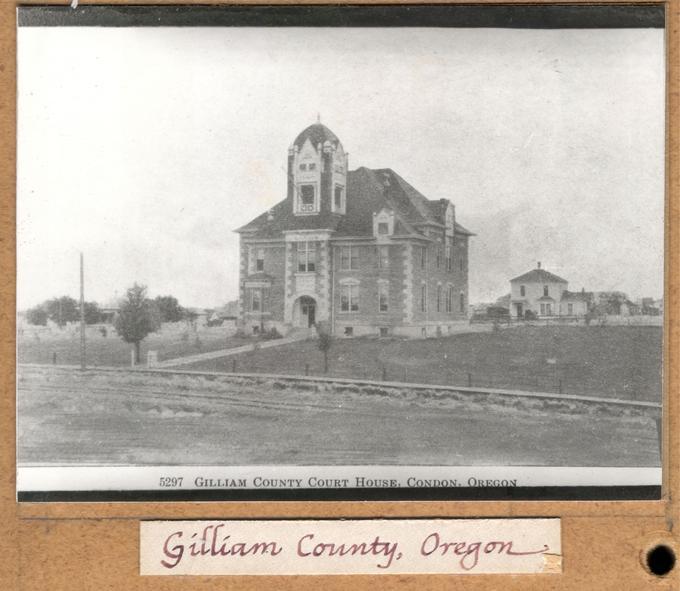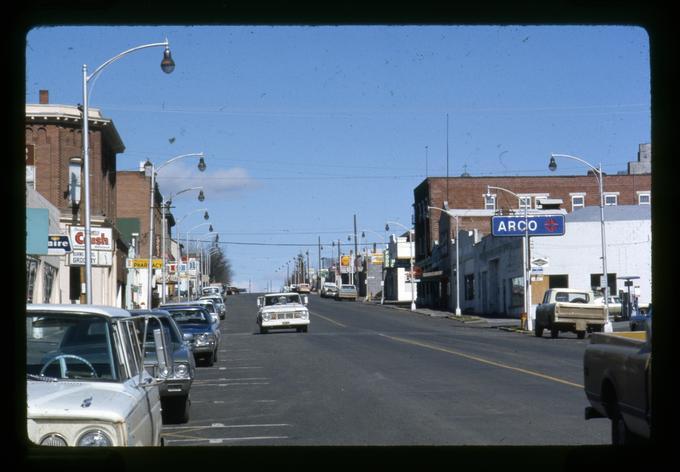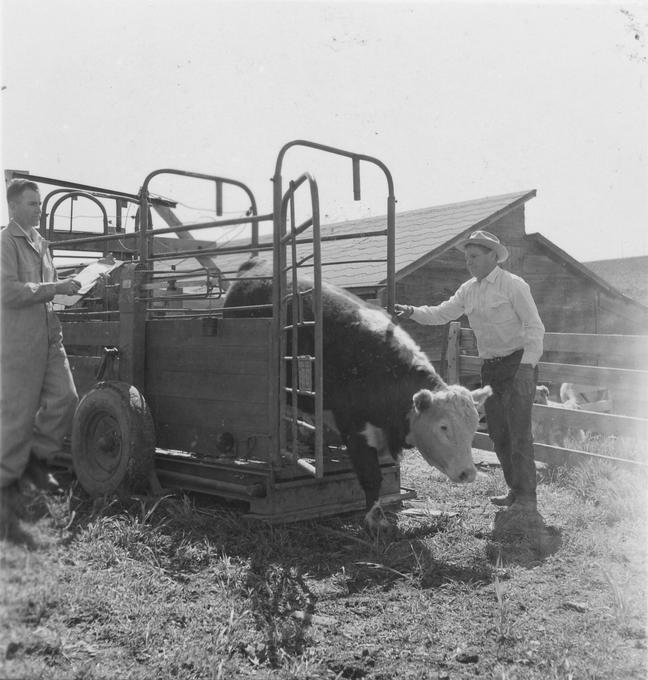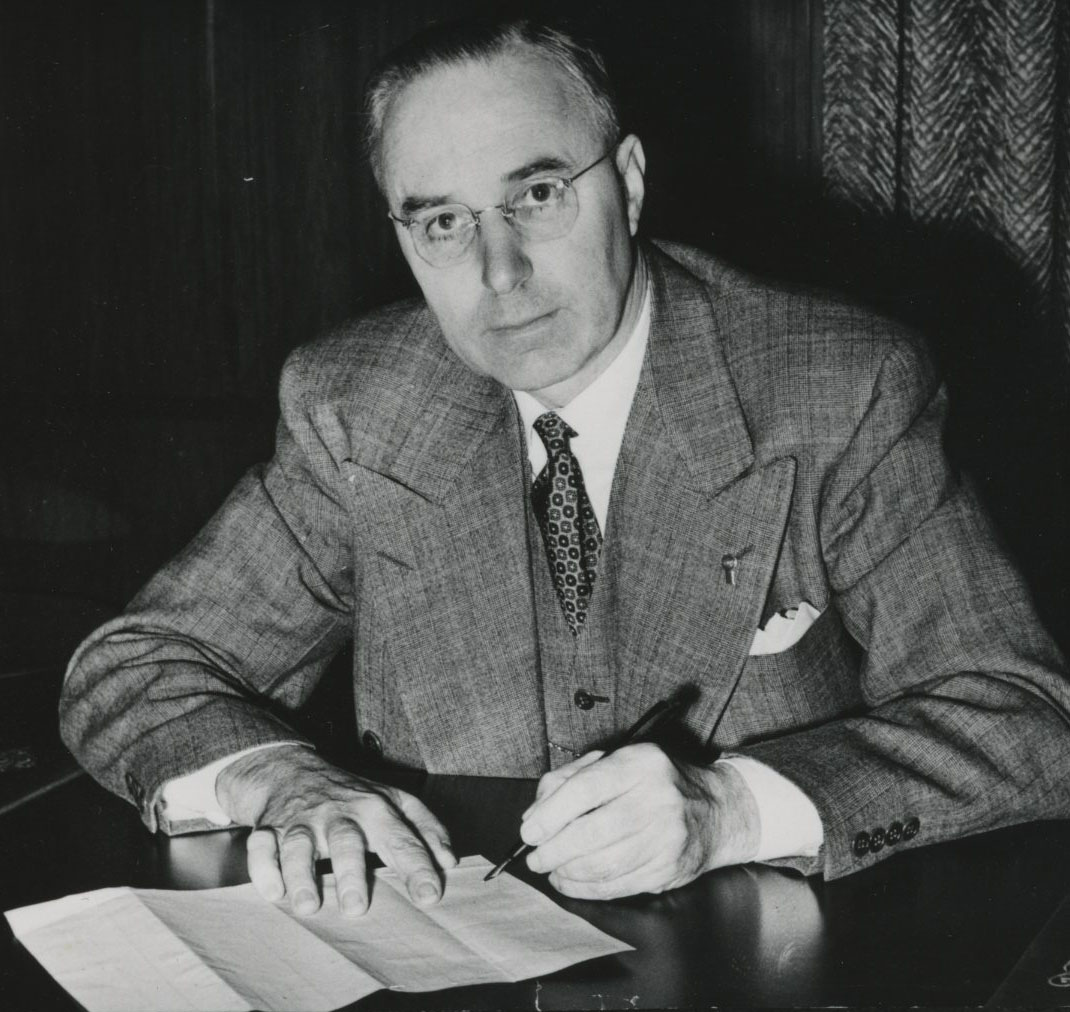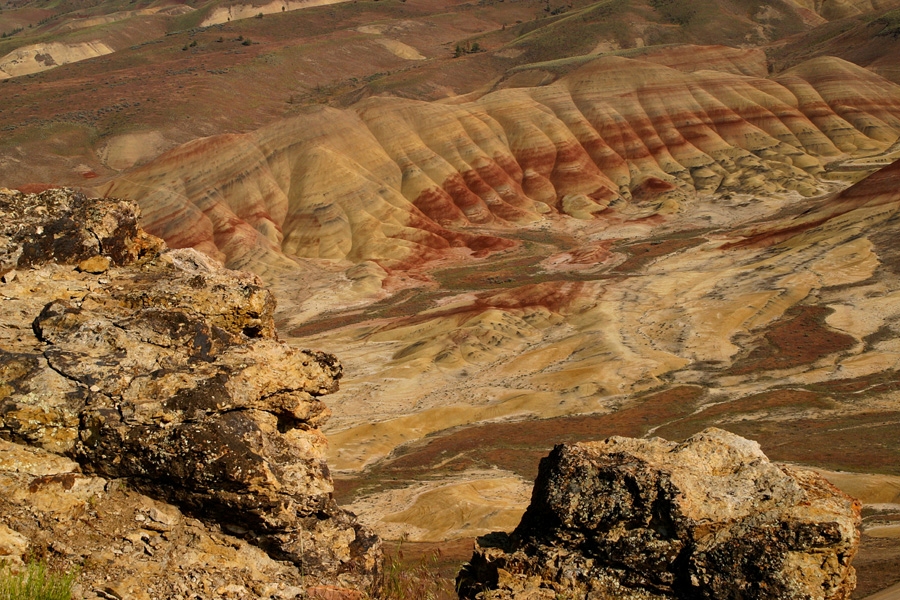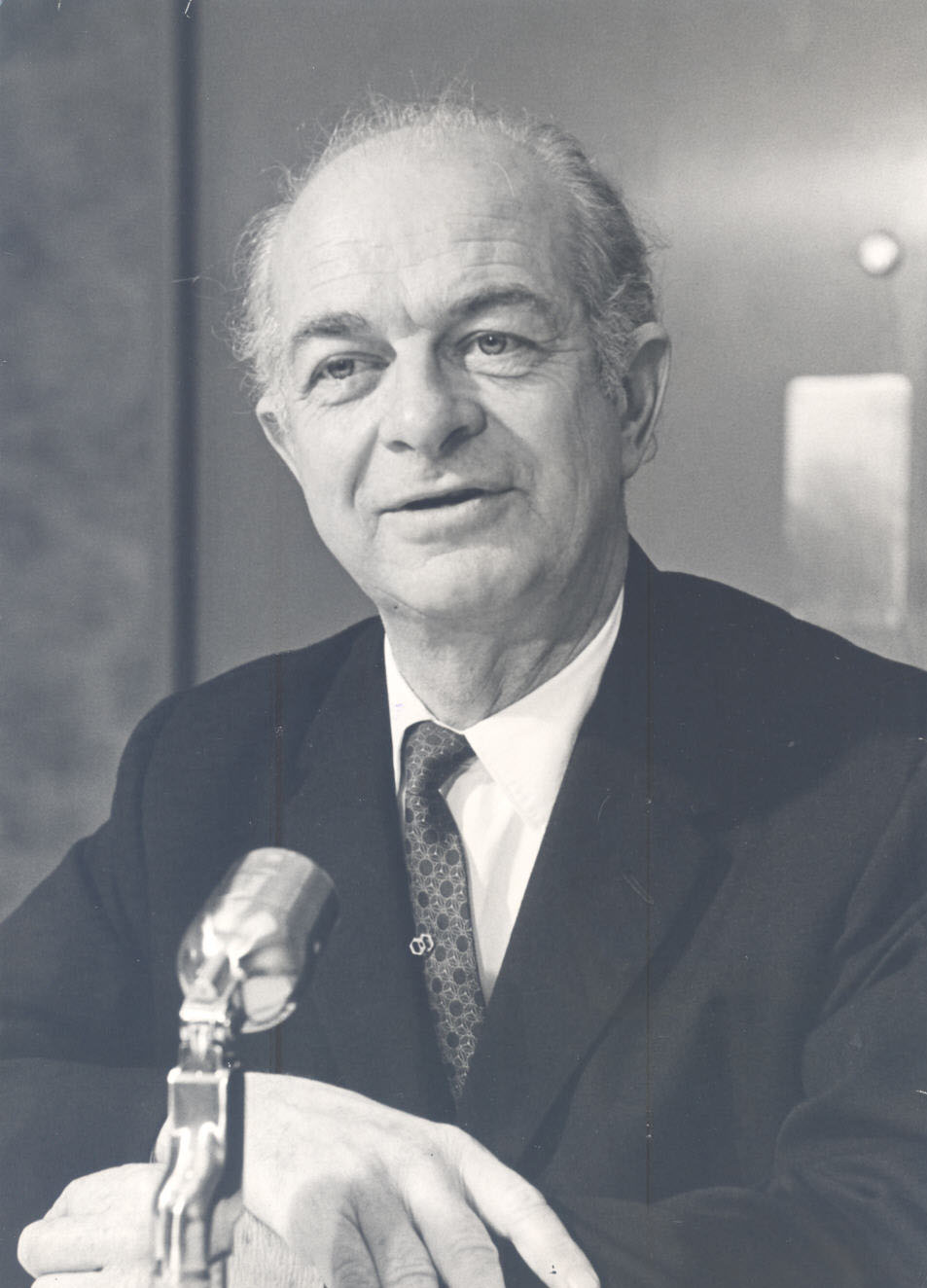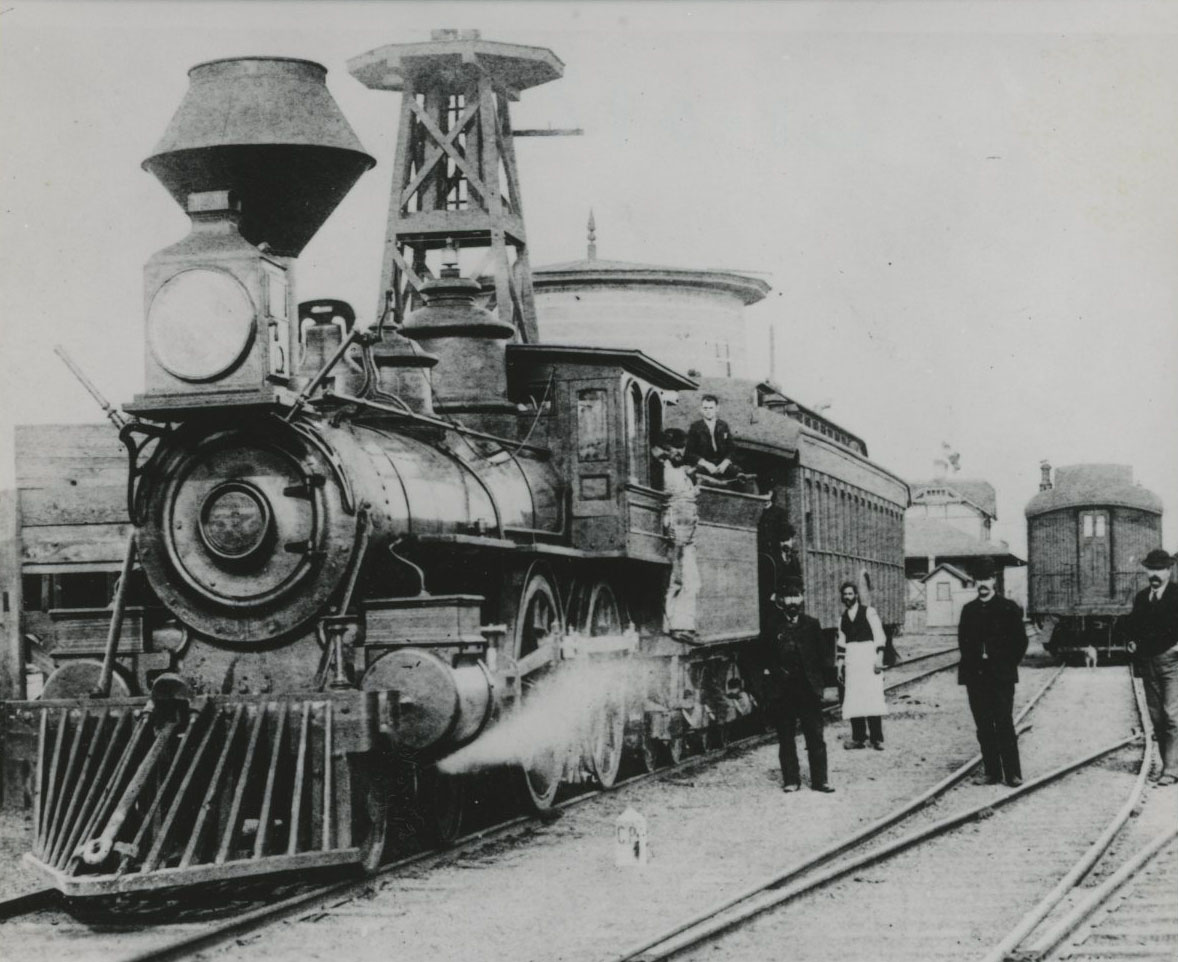The City of Condon, the county seat of Gilliam County, is located in north-central Oregon about seventy miles southeast of The Dalles. Miles of rolling wheat fields surround this small 0.83 square-mile farming and ranching community. The town was the county’s primary shipping center for livestock, wheat, and barley in the late nineteenth and first half of the twentieth century. Today, it serves as a jumping-off point for outdoor recreation in the nearby Cottonwood Canyon State Park and the Painted Hills.
For millennia, the Tenino band of the Warm Springs Indians hunted game and gathered roots and berries along the creeks and natural springs near Condon. In the nineteenth century, Cayuse expanded their hunting and gathering grounds from the Blue Mountains in the northeast to the Deschutes River in the west, in large part because of their skill with horses. They set up temporary camps during seasonal rounds and grazed their horses on the rolling grasses of the Deschutes-Umatilla Plateau that would later provide forage for EuroAmerican cattle and sheep. In the mid-nineteenth century, diseases brought by EuroAmericans drastically reduced regional tribal populations, and the Cayuse and Tenino were pushed out of their traditional hunting and gathering lands by white resettlement. Cayuse descendants today are part of the Confederated Tribes of the Umatilla Indian Reservation, and Tenino Indians are part of the Confederated Tribes of the Warm Springs.
The area of Condon was resettled in the late 1870s by a Mr. Potter who platted the land around a black basalt spring, known as Summit Springs. In financial distress, he relinquished his land to the Condon and Cornish legal firm based out of Arlington, Oregon. Lawyer Harvey C. Condon was the nephew of well-known Oregon geologist Thomas Condon. Beginning in 1885, the firm sold off land plats; David B. Trimble was among those to apply for a section. Trimble became postmaster of the area and named his post office after Harvey C. Condon. The surrounding settlement adopted the Condon name, and the city was officially incorporated February 10, 1893.
The town had its greatest economic and population growth from 1899 to 1910. During that decade, Condon became the primary trading and shipping center for grain and livestock in the county and surrounding region. In 1905, the Oregon Railway & Navigation Co. built a branch line from Arlington to its terminus in Condon. The population doubled, and residents constructed houses and government and commercial buildings to accommodate the growth. By 1910, Condon’s population reached 1,000; it peaked at 1,127 in 1920.
Condon endured the economic depression in the late 1920s and 1930s as the primary shipping center in the county. John Day Highway, now Oregon Route 19, was constructed between 1916 and 1925 and connected Arlington to Condon and towns farther south. In 1927, the Condon, Kinzua & Southern Railroad completed a north-south line between the two towns, allowing lumber from the Kinzua mill and agriculture goods from neighboring Wheeler County to be shipped through Condon.
For a short period, beginning in 1951, the Condon area was a site of a U.S. Air Force radar station before it was permanently closed in 1970 due to budget restrictions. The downtown area was listed on the National Register of Historic Places as the Condon Commercial Historic District in 1998, and the city has partnered with local business owners and entrepreneurs to invest more than $750,000 in the Main Street Revitalization Project. Oregon Route 19 runs along the historic Main Street, and the majority of the buildings along this stretch have undergone various restorations and improvements—the City Park was redesigned and the county library relocated to a larger facility. The population of Condon has gradually decreased since 1960, and as of 2020, the population numbered 711, with 93% white residents.
Condon hosts several annual events, including Robert Burns Day in January, which celebrates the pioneer families in Gilliam County who claim Scottish heritage. Other events include the Tumbleweed Basketball Tournament in March, the Fabulous 4th of July, the Fall Festival in November, and the Christmas Lighted Parade in December. Condon has been home to many notable Oregonians, such as Nobel Prize winners Linus Pauling and William P. Murphy, Oregon governors Jay Bowerman and Earl Snell, and U.S. Rep. Robert R. Butler.
-
![]()
Gilliam County Courthouse, Condon.
Courtesy Oregon State University Libraries -
![]()
Condon, Oregon, c. 1973.
Courtesy Oregon State University Libraries -
![]()
Cattle weighing at the Frank McClintock farm west of Condon, Oregon, 1957..
Courtesy Oregon State University Libraries
Related Entries
-
![Earl Wilcox Snell (1895–1947)]()
Earl Wilcox Snell (1895–1947)
Earl Snell was a Republican governor of Oregon who served during World …
-
![John Day Fossil Beds National Monument]()
John Day Fossil Beds National Monument
John Day Fossil Beds National Monument, established in October 1975, sh…
-
![Linus Pauling (1901-1994)]()
Linus Pauling (1901-1994)
Linus Pauling, who was born, raised, and educated in Oregon, became one…
-
![Oregon Railway & Navigation Company]()
Oregon Railway & Navigation Company
Recognizing the opportunity to monopolize access to Oregon by the trans…
Related Historical Records
Map This on the Oregon History WayFinder
The Oregon History Wayfinder is an interactive map that identifies significant places, people, and events in Oregon history.

